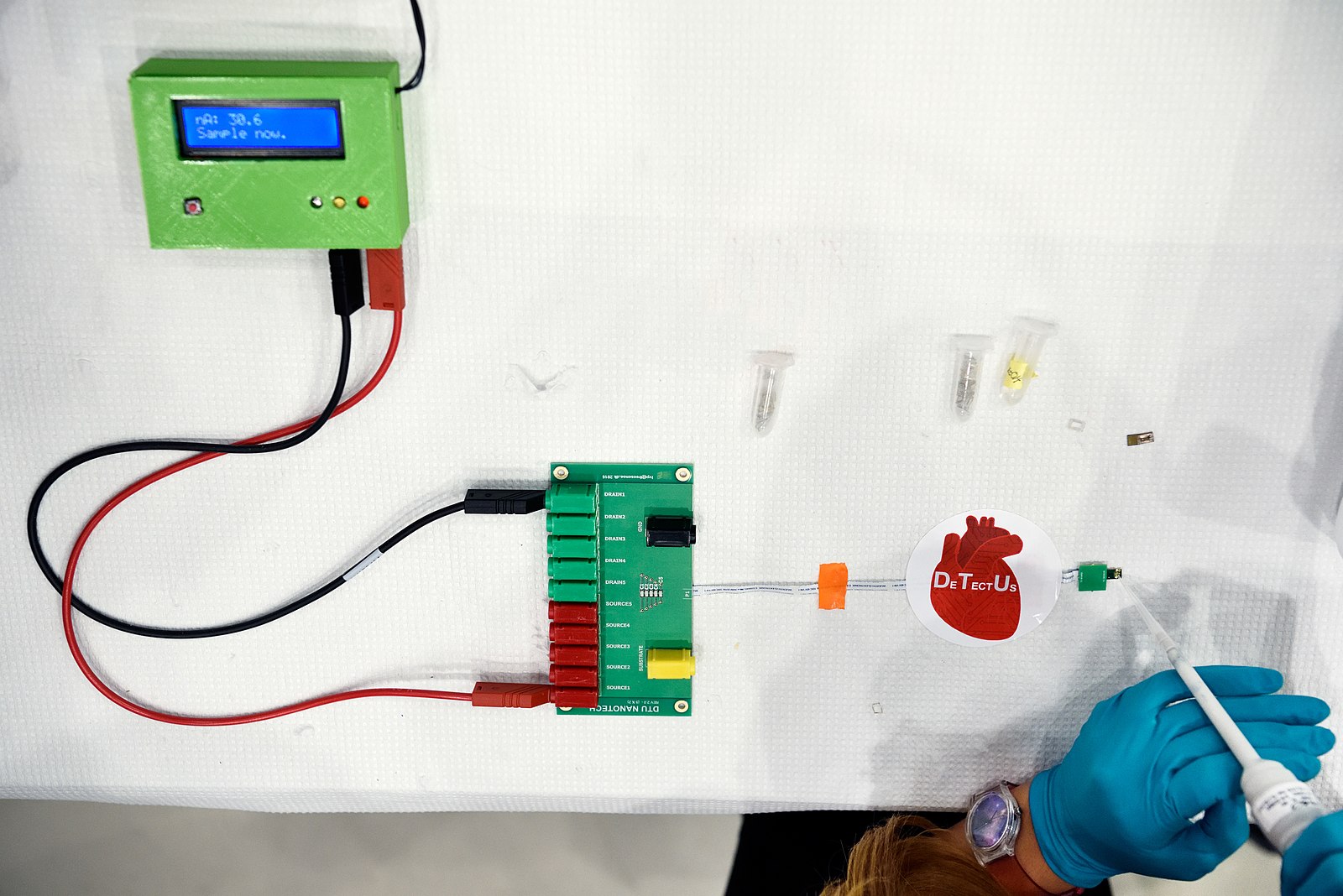Difference Between Biosensor and Biochip
In the past few years rapid strides have been made to exploit the applications of nanotechnology across various fields. The idea of creating a next generation of technological devices that integrate the knowledge coming from various fields such as biology, chemistry, electronics, and engineering is already gathering increasing attention. The technology is based on the use of microminiaturized components and the generic name for these so-called new microminiaturized devices is ‘biochip. Biochips have become one of the breakthrough technologies in various biomedical fields. Biochips usually contain at least one biosensor. In the recent past biochip and biosensor technologies have made significant progress across various application areas, thanks to nanotechnology. They have been applied to diverse analytical problems in medicine and biomedical research, food and processing industries, environment, security and defense. We take a look at the biochip and biosensor technologies in detail to help you understand the difference between the two.
What is Biosensor?
In literal sense, a sensor is any device used to sense a physical variable, which includes but not limited to temperature, humidity, pressure, mass, light and voltage. But to sense these variables, you need to convert them into a universal signal – usually a voltage. The voltage signal is usually an analog signal which is normally transferred to a computer or a microprocessor, which recognizes digital signals only. An analog-to-digital converter is required to convert these analog signals into digital signals. A biosensor is an analytical device that combines the specificity of biological recognition and the sensitivity of physiochemical detection to detect analytes. Biosensors mainly recognize the data concerning the presence of chemical compounds, otherwise called analytes. The best known example of a biosensor is the glucose sensor used to monitor the blood glucose level in diabetic patients.
What is Biochip?
A biochip is mainly a microchip made from biological molecules or structures rather than a semiconductor and is designed to function in a biological environment, especially in living organisms in order to analyze organic molecules. Biochip is a broad term concerning the use of microchip technology in molecular biology. Biochip technology plays a fundamental role in molecular diagnostics which includes all tests and methods to identify a disease and analyze DNA or RNA of an organism to understand the predisposition for a disease. DNA microarray is a rapidly growing method of sequencing and analyzing genes. Major advances have been made in the science of genetics, resulting in the increased use of molecular technology in the clinical laboratory. Moreover, the development of biochips has revolutionized the biotechnology industry, which is the fastest growing discipline in the modern laboratory that encompasses pharmaceuticals, proteomics, and genomics, among other activities.
Difference between Biosensor and Biochip
Technology involved in Biosensor vs. Biochip
– Biochip is a bio-microarray device, analogous to an integrated circuit, designed to function in a biological environment, especially in living organisms to analyze organic molecules. Biochip is a broad term concerning the use of microchip technology in molecular biology. It is a microchip made from biological molecules or structures rather than a semiconductor. Biosensor, on the other hand, is an analytical device that combines the specificity of biological recognition and the sensitivity of physiochemical detection to detect analytes. The term biosensor is short for biological sensor.
Use of Biosensor vs. Biochip
– Biosensors are mainly concerned with analyzing the data concerning the presence of chemical compounds, otherwise called analytes. Biosensing devices use the combination of a biological element and a physiochemical detector to detect analytes. The biorecognition elements used for the development of biosensors are classified into biological and artificial receptors. Biochip is a broad term concerning the use of microchip technology in molecular biology. They are highly miniaturized analytical devices designed to detect target nucleic acid binding to DNA or RNA arrays and for multiplex detection of protein-protein interactions in array systems.
Applications
– The most successful commercial biosensor application is the glucose sensor used to monitor the blood glucose level in diabetic patients. Biosensing devices have a wide range of applications from clinical research and medicine to environment and agricultural. Biosensors also play a pivotal role in drug discovery, biomedicine, diagnosis, food and processing, security and defense. Biochips can be used for a variety of applications such as tracking a person or an animal, storing information, detecting chemical agents during biological warfare, storing medical records, etc. Advanced applications of biochips include genome mapping and sequencing, drug discovery, environmental monitoring, and disease discovery and diagnostics.
Biosensor vs. Biochip: Comparison Chart
Summary of Biosensor Vs. Biochip
While the current development of biochips is primarily in the area of genome mapping and sequencing, biochips are finding ways in several other application areas. For example, pharmaceutical industry has started to see the potential of biochips in drug discovery, mostly disease discovery and diagnostics. Moreover, new applications have emerged in the areas of environmental monitoring, along with others such as toxicology and biochemical research. Biochips generally consist of an array of individual biosensors but not all biosensors are biochips. Together, the two technologies play a key role in medicine and biomedical research, food and processing industries, environment, security and defense, and so on.
- Difference Between Caucus and Primary - June 18, 2024
- Difference Between PPO and POS - May 30, 2024
- Difference Between RFID and NFC - May 28, 2024
Search DifferenceBetween.net :
Leave a Response
References :
[0]Image credit: https://commons.wikimedia.org/wiki/File:Biosensor_of_DeTectUs_SensUs_2017.jpg
[1]Image credit: https://commons.wikimedia.org/wiki/File:Biochip.jpg
[2]Cheng, Jing and Larry J. Kricka. Biochip Technology. Boca Raton, Florida: CRC Press, 2003. Print
[3]Yoon, Jeong-Yeol. Introduction to Biosensors: From Electric Circuits to Immunosensors. Berlin, Germany: Springer, 2012. Print
[4]Rinken, Toonika. Biosensors: Micro and Nanoscale Applications. Croatia: InTech, 2015. Print
[5]Giardi, Maria T. and Elena Piletska. Biotechnological Applications of Photosynthetic Proteins: Biochips, Biosensors and Biodevices. Berlin, Germany: Springer, 2007. Print
[6]Xing, Wan-Li and Jing Cheng. Biochips: Technology and Applications. Berlin, Germany: Springer, 2003. Print



